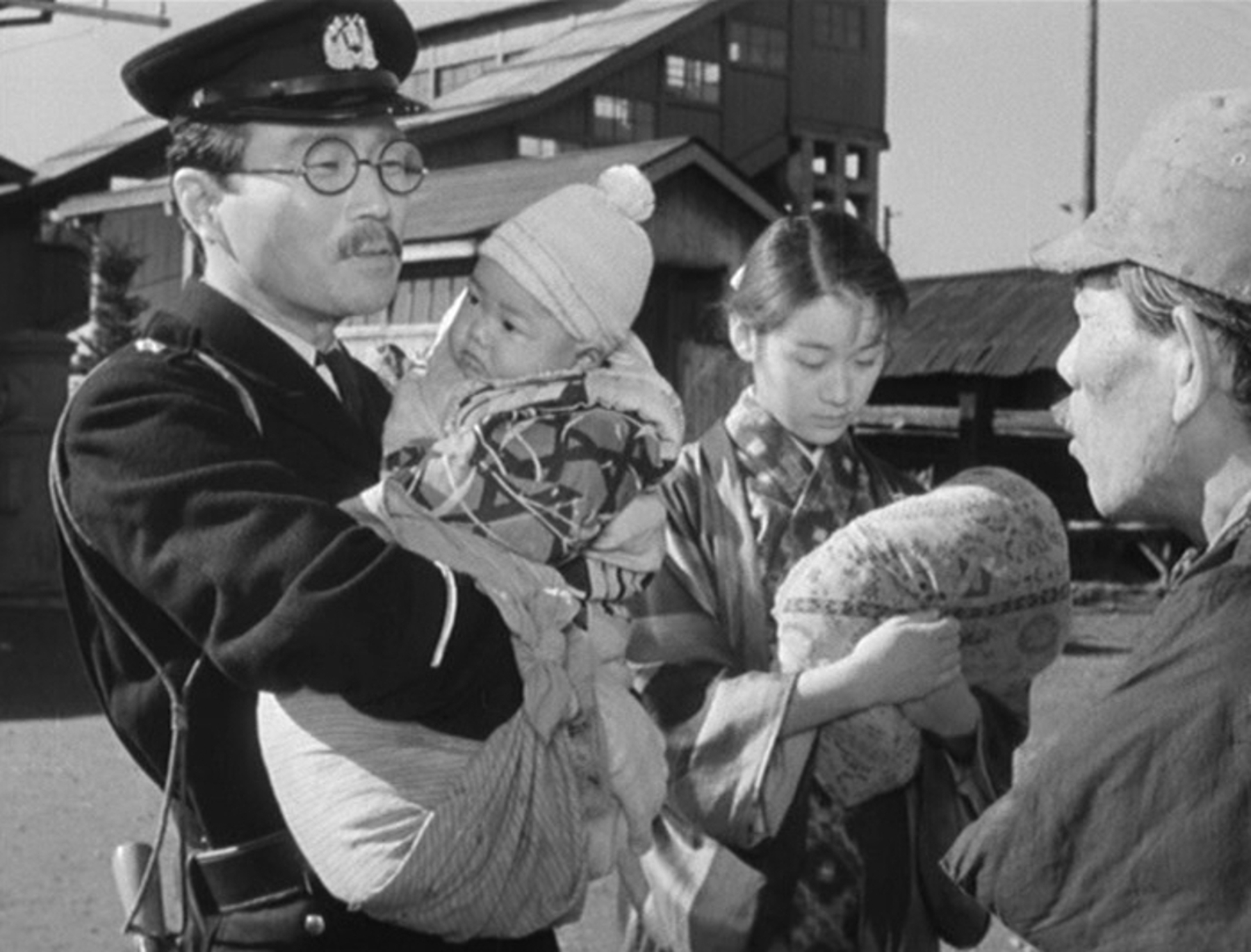
“This is rather a lonely place, isn’t it?”
A young woman told her male companion as they walked toward seashore from the railway station. It was already half past nine. More precisely, it was a few moments after 9:35 p.m. They apparently had arrived at the Nishitetsu-Kashii station near Fukuoka, Kyushu, at 9:35 p.m. and started toward the rocky beach of Kashii. A drunk passer-by overheard her words. He told so to police detectives weeks later. Next morning he overheard this enigmatic words, a woman and a man were found dead on the beach side by side. The local police concluded it was a double suicide. Detective Torikai didn’t think so. And the federal police investigating a political scandal in Tokyo didn’t think so either. The man who died beside his lover was the key witness to the scandal. He went to the grave with all the dirty secrets.

Based on Seicho Matsumoto’s classic mystery published in 1958, the film tells a dark story of a powerful business man and his bed-ridden wife. Also, it is about the obsession of a group of detectives to solve the riddle of railway timetable. But perhaps it is a story of a center and peripherals, or Tokyo and a bunch of ‘lonely places’ around Japan.
One of the surprising aspects about this story (and the film) is how desolate – lonely – Kashii was. At least for me. At 9:35, there were only a handful stores open around the stations (there are two railway stations), and the town was quietly wrapped with darkness. Kashii is located only several kilometers northeast of Hakata, the most populated city on the Kyushu island. It maybe the most puzzling mystery of all; why the town of Kashii, so suitable for commuting and developing, with two railway stations directly connecting to Hakata, was such a lonely place?

Today, the lonely gravel road the couples took to the beach has been completely developed, paved, and filled with McDonalds and Seven-Elevens. Actually there is no rocky beach anymore. The shoreline has been completely altered, landfilled, the highways are laid over it, and there is nothing recognizable seen in the film. And there is nothing recognizable as a particular place. It is a generic landscape you would find all over Japan. If you place that yellow-orange figure at Kashii on Google map, what you will see is no different from the street view of, say, Shizuoka.
Transformation in the intervening years between now and then may have been in Matusmoto’s mind when he structured the puzzle of railways, ships and airplanes. It is about infrastructure of the Nation. Actual hardware of transportation has been a key to bring the Nation back from aftermath of the war to the prosperity. Most of all, the railway system in Japan has been the artery to transport people, material, information, and culture. Though Kashii was a lonely place, it was still connected to Tokyo via railway. It was not middle of nowhere. It was still the place you can reach from Tokyo, the place you can imagine looking at the railway diagram at a quiet upscale mansion in Kamakura. It is more symbolic if you consider the political scandals in the story involved the government bureaucrats in Tokyo. The politics, completely glued to economic incentives of all the parties involved, from local politicians to CEOs to voters to union members to real estate developers to whoever they are, has been orchestrated by a bunch of elite bureaucrats in Tokyo. In these intervening years, self-righteous government policies, business practices heavily influenced by bureaucratic conventions, cultural designs averaged and marred by obsessed consensus in media were propagated from the center – Tokyo -, to the lonely peripherals in remote places, through this artery. Maybe you can say, ‘old landscape is lost’. Or ‘all the landscapes were painted with the same brush’. The brushes designed in Tokyo. That is why the present day Kashii looks generic.
The film is before this transfusion from the Center. Vulgarity of Yasuda or any other bureaucrats, including detectives, didn’t die. It survived as faceless landscape – place not any longer lonely – everywhere around us.
Points and Lines, aka The Dead End (点と線, 1958)
Directed by Tsuneo Kobayashi
Produced by Noboru Nezu
Written by Masato Ide Based on the novel by Seicho Matsumoto
Cinematography by Shizuka Fujii
Starring Mieko Takamine, Isao Yamagata, Hiroshi Minami, Yoshi Kato
Toei
Copyrighted materials, if any, on this web page are included as “fair use”. These are used for the purpose of research, review or critical analysis, and will be removed at the request of copyright owner(s).

